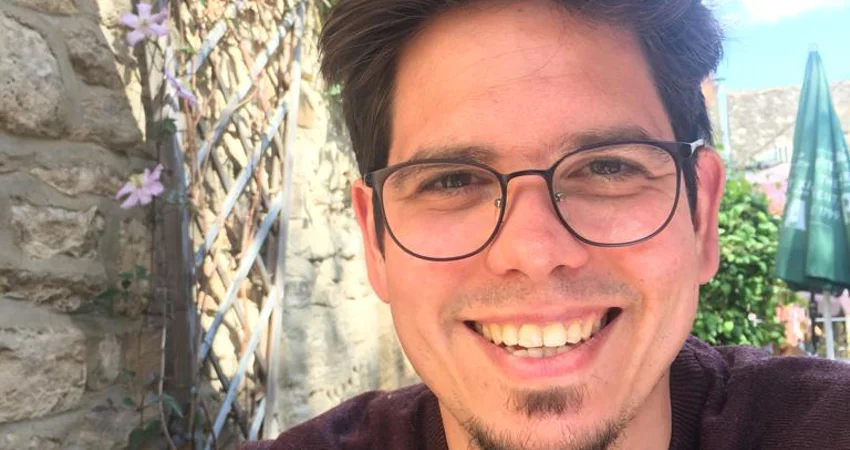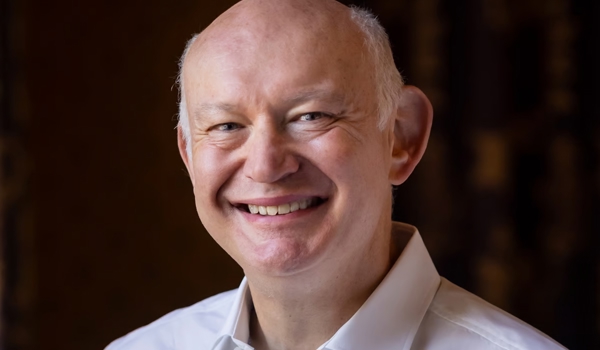15 Oct 2020
UKRI Future Leaders Fellowship to enable pioneering ground-based testing of space travel
Dr Tobias Hermann aims to ensure that future spacecraft are able to re-enter the earth’s atmosphere safely despite being exposed to extreme heat

Dr Tobias Hermann
Dr Tobias Hermann, Senior Research Associate in Hypersonics at the Oxford Thermofluids Institute, is to receive a prestigious UKRI Future Leaders Fellowship, which provides funding of up to £1.5million over a 4-year period to establish the careers of world-class research and innovation leaders across the UK. This government support for 101 research and innovation leaders of the future will help the UK to tackle major challenges ranging from cancer treatment to space travel and reducing harmful vehicle emissions.
UK Research and Innovation Chief Executive, Professor Dame Ottoline Leyser, said: “The fellows announced today illustrate how the UK continues to support and attract talented researchers and innovators across every discipline to our universities and businesses, with the potential to deliver change that can be felt across society and the economy".
Dr Hermann’s research focuses on enabling exploration and return missions into the Solar System. In particular the Fellowship will enable the upgrading of the T6 Stalker Tunnel housed at the Thermofluids Institute to a novel hybrid plasma/hypervelocity wind tunnel, which will enable ground-based testing of space travel re-entry physics at a completely new level.
The T6 Stalker Tunnel, Europe’s fastest hypersonic wind tunnel

He says, “The long-term focus of the project is to build a platform for exciting future research in hypersonics. Within this fellowship, I am planning to build a new type of experimental facility that improves how we can replicate the environment faced by a re-entering spacecraft when it travels through the atmosphere. This will unlock previously unavailable data to help us improve the heat shields of re-entry capsules. This in turn will allow an expansion of the domain of our solar system we can explore through space return missions.”
The exploration of space depends heavily on our capability to travel through the atmosphere of planets. This applies to spacecraft reaching the surface of other planets, as well as return missions re-entering the Earth’s atmosphere and bringing humans or samples back to the ground safely. This short phase of high-speed atmospheric flight at speeds of over 10km/s presents a major obstacle for future space exploration, generating extreme heat loads and gas temperatures which are equivalent to around twice the surface temperature of the sun. To ensure the survival of the spacecraft and its contents, it is protected by a heat shield that continuously decomposes during the entry manoeuvre.
Models used to predict these heat loads suffer from large uncertainties, which result in exorbitant safety margins requiring heat shields that are too heavy for future exploration missions. Dr Hermann’s research aims to enable a decrease in the heat shield mass, increasing both mission capacity and reducing the cost.
He explains, “The best way to achieve this goal is through experimental ground testing that simulates the extreme flows as encountered in flight. Since the beginning of the space age there are two different approaches to this problem: Pulse wind tunnels and plasma wind tunnels. Pulse wind tunnels produce the real flow velocity, which allows the replication of the entire flow field around a sub-scale model of the vehicle. Plasma wind tunnels provide the experimental capability to investigate the interaction between the flow and the heat shield material. Due to the practically unlimited runtime of plasma facilities, a heat shield material sample reaches the temperatures experienced in flight.”
A new hybrid facility in collaboration with DLR Stuttgart will enable hyper-velocity testing of scaled models at flight temperatures and that are made of real heat shield materials. A plasma generator will be integrated into the architecture of the existing Oxford T6 wind-tunnel to pre-heat models before they are exposed to the short duration high-speed flow. The resulting flow field around them, a physical process not currently well understood, will be probed by advanced diagnostic methods.
A schematic of the envisioned facility
Tobias adds, “The UKRI Future Leaders Fellowship is a gigantic step for me personally and a milestone in my career. It enables me to follow through on a hugely ambitious project. It also marks the start of my independent academic career and helps me to start my own team and develop my own research portfolio."
"I am extremely thankful to the many people who supported and enabled me in this endeavour including Matthew McGilvray, David Gillespie, Benjamin Williams and the entire Department of Engineering Science. I also want to thank Stefan Löhle from the University of Stuttgart, Hannah Böhrk from DLR Stuttgart, Brett Cruden from NASA Ames, Jim Merrifield from Fluid Gravity Engineering, David Payne and Graham Simpson from DSTL, and Douglas Smith from AFOSR. Without their support, this would not be possible, and I am very grateful for their trust.”




